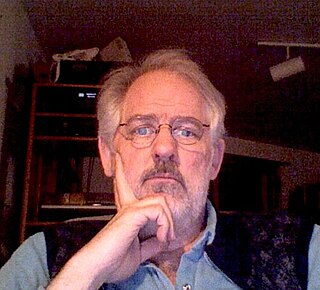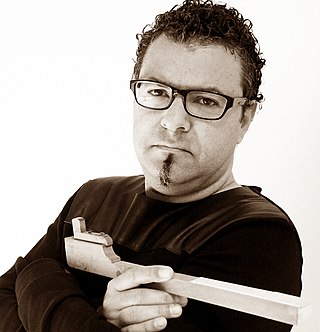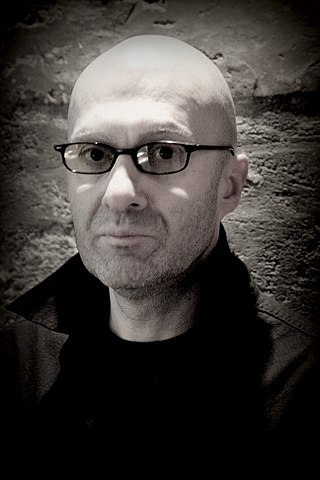Related Research Articles

Ragtime, also spelled rag-time or rag time, is a musical style that had its peak from the 1890s to 1910s. Its cardinal trait is its syncopated or "ragged" rhythm. Ragtime was popularized during the early 20th century by composers such as Scott Joplin, James Scott and Joseph Lamb. Ragtime pieces are typically composed for and performed on piano, though the genre has been adapted for a variety of instruments and styles.
William Duckworth was an American composer, author, educator, and Internet pioneer. He wrote more than 200 pieces of music and is credited with the composition of the first postminimal piece of music, The Time Curve Preludes (1977–78), for piano. Duckworth was a Professor of Music at Bucknell University. Together with Nora Farrell, his wife, he ran Monroe Street Music, the publisher of many Duckworth's pieces.

Kyle Eugene Gann is an American composer, professor of music, critic, analyst, and musicologist who has worked primarily in the New York City area. As a music critic for The Village Voice and other publications, he has supported progressive music, including such "downtown" movements as postminimalism and totalism.
Tom Johnson is an American minimalist composer.
Minimal music is a form of art music or other compositional practice that employs limited or minimal musical materials. Prominent features of minimalist music include repetitive patterns or pulses, steady drones, consonant harmony, and reiteration of musical phrases or smaller units. It may include features such as phase shifting, resulting in what is termed phase music, or process techniques that follow strict rules, usually described as process music. The approach is marked by a non-narrative, non-teleological, and non-representational approach, and calls attention to the activity of listening by focusing on the internal processes of the music.
James "Kermit" Driscoll is an American jazz bassist. He is known for his long association with guitarist Bill Frisell in the 1980s and '90s. Driscoll has worked in many genres and music settings: Broadway, classical, jazz, folk, rock, film, and television. He has taught at SUNY Purchase College and Sarah Lawrence College.

Discreet Music is the fourth studio album by Brian Eno, and the first released under his full name. The album is a minimalist work, with the titular A-side consisting of one 30-minute piece featuring synthesizer and tape delay. The B-side features three variations on Canon in D Major by Johann Pachelbel, performed by the Cockpit Ensemble and conducted by Gavin Bryars.
The Labèque sisters, Katia and Marielle, are an internationally recognised French piano duo.

Bruno Sanfilippo is an Argentine pianist and composer from Buenos Aires, Argentina. He currently resides in Barcelona, Spain. His sound has been described as an exploration of minimalist piano concepts and electroacoustic music. In 2015, he became one of the main exponents of the LIFEM 2015 festival, specializing in minimalist music.

Anton Batagov is a Russian pianist and post-minimalist composer. "One of the most significant and unusual figures of Russian contemporary music", according to 'Newsweek's Russian edition in 1997, Batagov is an influential Russian composer and performer.
Tom Johnson's An Hour for Piano was written in 1971. The piece began as a series of short, improvisatory sketches in 1967 when Johnson was accompanying a modern dance class at New York University. Johnson gradually expanded these sketches and added transitions between them, writing a piece that is to be played in exactly one hour. Achieving this goal requires an absolutely steady tempo for the duration of the piece, which Johnson has set at quarter note = 59.225 beats per minute. The only recording that is exactly sixty minutes long was recently released by the Irritable Hedgehog label and performed by R. Andrew Lee.

Richard William Batsford is an English pianist, composer and singer-songwriter. He is a recording artist and a frequent performer, initially in and around his birthplace in Birmingham, England, and more recently in Adelaide, Australia, presenting concerts featuring original solo piano music with a classical influence.

Bruce Brubaker is a musician, artist, concert pianist, and writer from the United States.

Irritable Hedgehog Music is a Kansas City-based record label, focused primarily on minimalist and electroacoustic music.

Le Fils des étoiles is an incidental music score composed in December 1891 by Erik Satie to accompany a three-act poetic drama of the same name by Joséphin Péladan. It is a key work of Satie's "Rosicrucian" period (1891–1895) and played a role in his belated "discovery" by the French musical establishment in the 1910s.
The Time Curve Preludes is a minimalist composition for piano solo by William Duckworth written between 1977 and 1978. This piece is credited as the first postminimal piece of music, and is his most frequently heard work. The Time Curve Preludes were composed between 1977 and 1978 on a fellowship from the National Endowment for the Arts. They were premiered at Wesleyan University in 1979 by pianist Neely Bruce. Duckworth used elements of Minimalism, including repetition and accessible harmonies, yet also embraced more quickly changing structures; wide-ranging, complex melodies; and colorful dissonances.
Dennis Lee Johnson was a mathematician and minimal composer. He is the namesake of the Johnson homomorphism in the study of mapping class groups of surfaces.

Dante Boon is a Dutch composer and pianist. A member of the Wandelweiser composers collective, he is perhaps best known as an interpreter of experimental piano music. His own music has been performed internationally to wide acclaim.

Nicolas Horvath is a French pianist and electroacoustic composer.
The Fête donnée par des Chevaliers Normands en l'honneur d'une jeune demoiselle is an 1892 piano composition by Erik Satie. An example of his Rosicrucian or "mystic" phase, it was published posthumously in 1929. A typical performance lasts about 4 minutes.
References
- ↑ "The Interaction of Linear and Vertical Time in Minimalist and Postminimalist Piano Music, Vita" (PDF). R. Andrew Lee Dissertation, Vita. Retrieved 17 May 2016.
- ↑ "Classical Playlist: Martha Argerich, Third Coast Percussion, Garrick Ohlsson and More". New York Times. 27 November 2013. Retrieved 4 May 2015.
- ↑ Smith, Steve. "Wandelwatching: Music for Contemplation, March 1, 2014". Night After Night. Retrieved 4 May 2015.
- 1 2 "R. Andrew Lee Bio". R. Andrew Lee. Retrieved 4 May 2015.
- ↑ "2015 Awardees". UMKC Alumni Association. Retrieved 4 May 2015.
- ↑ McGovern, Chris. "R. Andrew Lee". The Glass Blog. Retrieved 4 May 2015.
- 1 2 "R. Andrew Lee". Vitae. Retrieved 4 May 2015.
- ↑ "Tom Johnson: An Hour for Piano". Irritable Hedgehog. Retrieved 4 May 2015.
- ↑ Jackson, Tom. "Andy Lee's a Sixty Minute Man". Modern Tempo. Retrieved 4 May 2015.
- ↑ "R. Andrew Lee Faculty Bio". Regis University. Retrieved 4 May 2015.
- ↑ "UMKC Alumnus Named Gramophone Magazine's Critic's Choice". UMKC. Retrieved 4 May 2015.
- ↑ Smith, Steve. "Best of 2013: Best classical music of 2013". Time Out NY. Retrieved 4 May 2015.
- ↑ Ross, Alex (15 December 2013). "Notable Classical Performances and Recordings of 2013". The New Yorker. Retrieved 4 May 2015.
- ↑ "R. Andrew Lee Schedule". R. Andrew Lee.
- ↑ McElhearn, Kirk. "Interview with R. Andrew Lee, Minimalist Pianist". Kirkville. Retrieved 4 May 2015.
- ↑ Lee, R. Andrew (November 2012). "Temporality as an Analytical Approach to Minimalist Music: Tom Johnson's An Hour for Piano". CeReNeM. 1 (3): 37–57. Retrieved 4 May 2015.
- ↑ "Author Archives: R. Andrew Lee". NewMusicBox. Retrieved 4 May 2015.
- ↑ "All Posts by Andrew Lee". I CARE IF YOU LISTEN. Retrieved 4 May 2015.